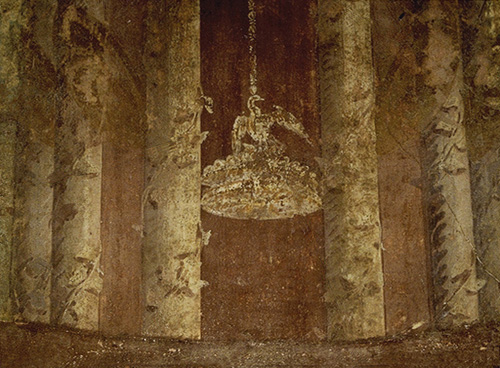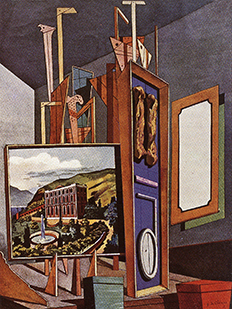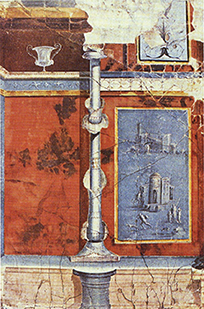Ariadne’s association with the Minoan labyrinth, the Minotaur, Theseus and Dionysus encapsulates several of De Chirico’s main themes, particularly those concerned with the relationship between metaphysics and perspective. This is exemplified by the symbolic journey characterised by the Labyrinth and a dysfunctional relationship between time and space; which in turn manifests itself as presentiment and sublime fear signified by the unseen Minotaur; loss and abandonment epitomised by Theseus and Ariadne; and finally spiritual awakening which, in De Chirico’s case, was the gift of Dionysus experienced through the eyes of Apollo.
Theseus, in association with Ariadne, signifies loss because he abandoned her on the island of Naxos after she helped him slay the Minotaur and escape from the Labyrinth. His betrayal caused her to fall into a deep and mysterious sleep from which only Dionysus, the underworld god of rebirth, could awaken her. In this latter context Ariadne’s awakening is synonymous with De Chirico’s professed artistic awakening after contact with Nietzsche’s writing. Dionysus, the symbol of Nietzschean metaphysics, awoke Ariadne from her mysterious sleep and Nietzsche, in turn, according to De Chirico himself, awoke him to “what the painting of the future might be”. The image of Dionysus (Bacchus) is also quite literally woven into ancient tragic style wall-painting via emblematic reference such as vine leaves and grape motifs (fig.1).
The Painting within the Painting
De Chirico employs the concept of the painting within the painting as a mise-en-abyme, invariably linking two related but juxtaposing worlds. Similarities with tragic-style wall-painting are clearly demonstrated by comparing Metaphysical Interior 1946 with a similar use of trompe l’oeil mise-en-abyme in the Villa Fannius Synistor at Boscoreale (figs.2-3). Both display a cerebral window, a view beyond located within an already illusionistic space.
 11
11 2
2 3
3